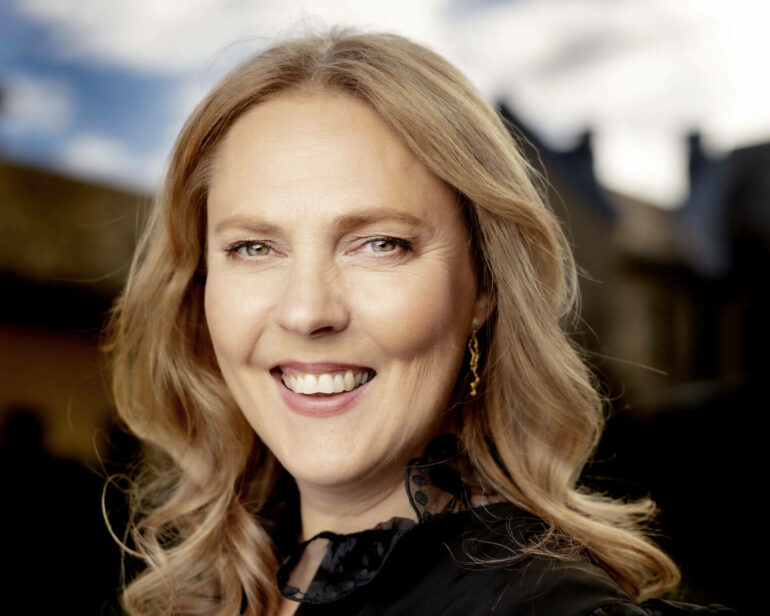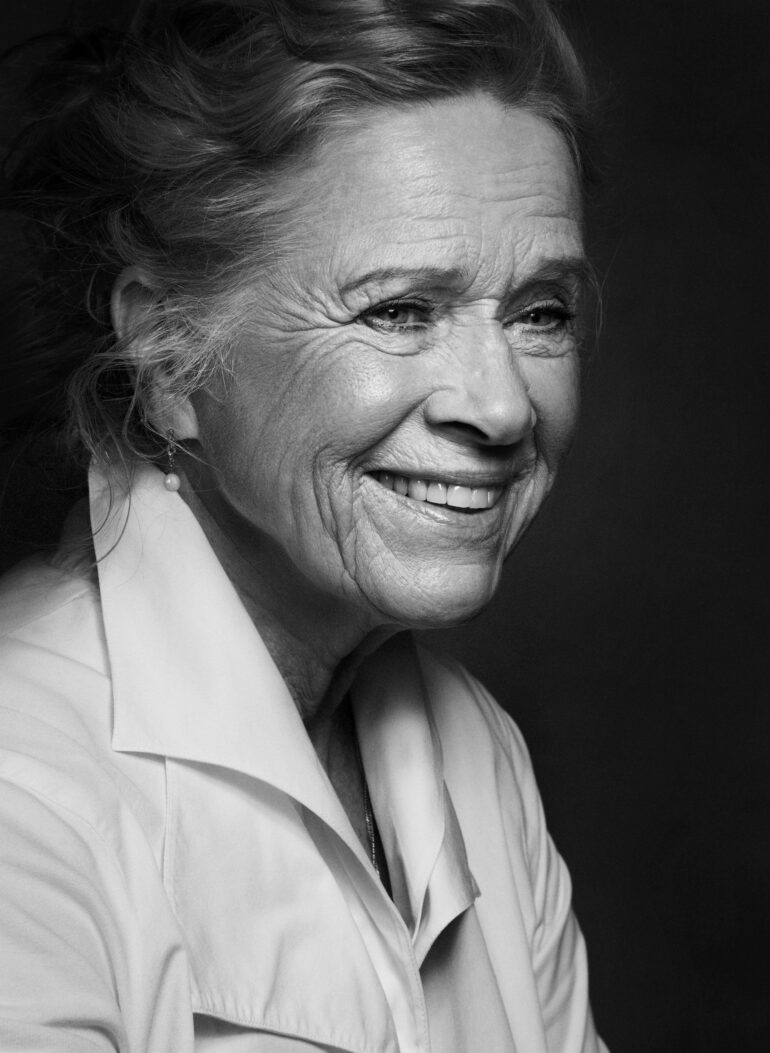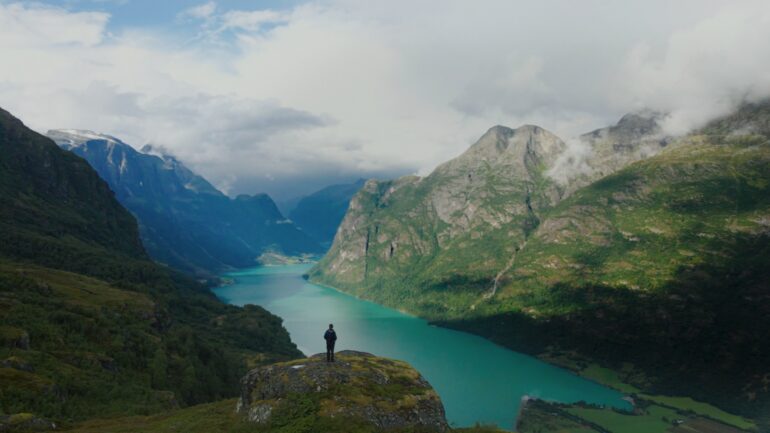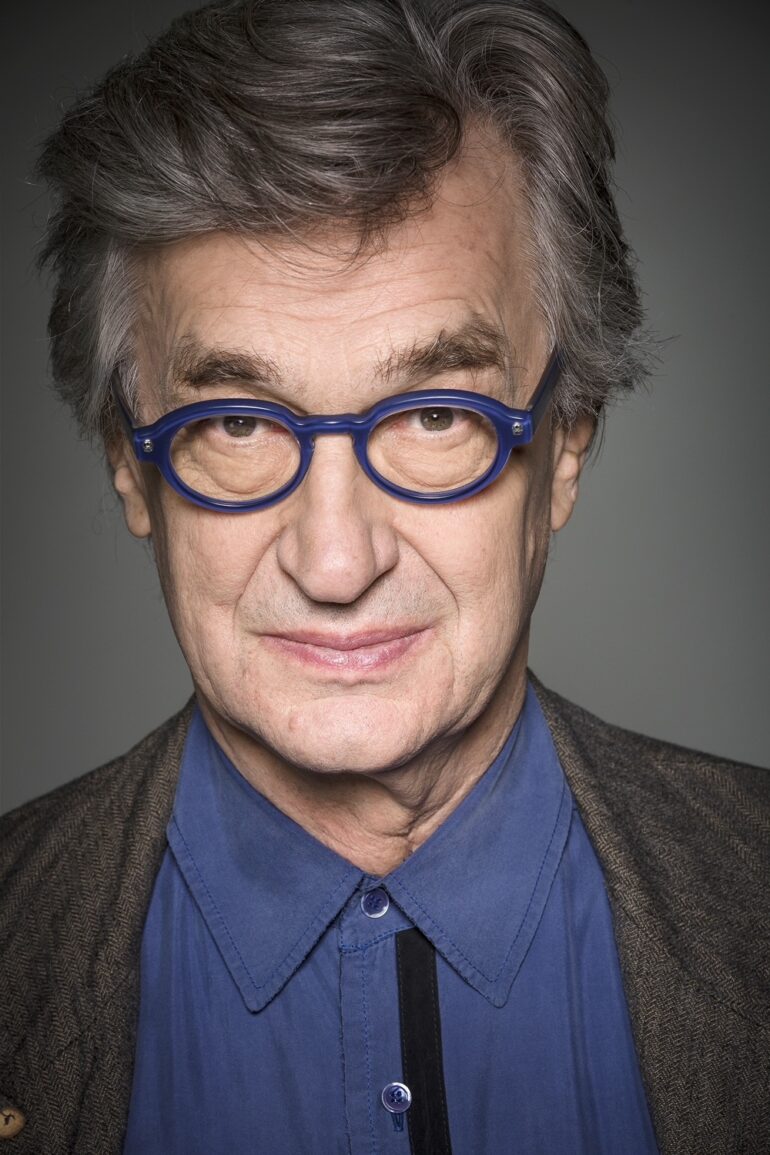WRITTEN BY: Annika Pham
The prominent Norwegian filmmaker is competing at CPH:DOX’s main competition DOX:Award with her hymn to nature Songs of Earth, co-produced by BBC, SWR and Arte.
The film world premieres in Copenhagen March 18. Cinephil handles global sales and Norsk Filmdistribusjon the Norwegian theatrical release, set for September 1st.
One of Norway’s most internationally acclaimed filmmakers, Margreth Olin has won multiple awards for her poignant human-driven documentary films The Self Portrait, Doing Good, Nowhere Home and fiction film The Angel.
Songs of Earth is her most personal documentary, a hymn to nature, with her 85-year old father as a guide. Through breath-taking images and sounds recreating nature’s melodies, we travel to Norway’s splendid Oldedalen valley in Nordjord, where Olin’s father and ancestors have lived, always in harmony with nature.
“The film is a love letter to nature, but also a love letter to both my parents and especially to my father,” said Olin who has detailed to us her artistic approach, which received the seal of approval from Oscar-nominated Wim Wenders and Liv Ullmann, both executive producers on the film.
Ullmann says it’s an important film in which “a father takes his daughter with him to see, listen and feel the earth. In Songs of earth, Margreth Olin reminds us of who we are and why we are,”
The film was produced by Olin and Lena Faye-Lund Sandvik for Speranza Film, in co-production with the BBC, SWR and Arte.
We spoke to Olin ahead of CPH:DOX:
This film is I guess your most personal one. Had the desire to film your father - and mother - against this breath-taking environment, been lingering in you for a while?
Margreth Olin: In March 2020 I was meant to travel to South Africa to do a film. Then Covid struck and everything closed down. I started thinking - what will happen now? I called my father and said - maybe this is the time for us to walk together. If we do this and walk for several seasons, could I bring my camera and crew?
I had thought about this a lot. As a child, I was in a way, my father’s girl, while my sister was my mum’s girl. My mum was a very good storyteller which was wonderful. But my father always brought me out in nature. He would bring me to the glacier and say-can you hear? And while looking at a lake he would say - have you ever seen a colour like this? I believe my imagination and creativity have been enriched by my upbringing close to nature. It has been decisive for who I am. I had to move away to realise how our surroundings reflect our inner space.
How did your father feel about taking you - and the audience - on his walks and sharing those existential moments in nature?
MO: Seven years ago, my life partner got a major stroke. He went into coma, woke up. He survived against all odds. The following years were hard for both of us. In a way, we had to start all over again. Then my youngest daughter got ill. I started getting panic attacks.
Usually, in moments of pain, I go to my father. He realised that my grief was real. He said…we need to walk, but this time we should walk for one year (and that was before Covid). He knows that being in nature is to be home, nature is our home! I had lost confidence in life, he knew how nature could recharge my batteries and give a deeper understanding to what I was experiencing in life. By walking with him, and behind him, for hours and hours, thinking that one day I would lose him, somehow my fear of death gradually left me. Death is a part of life. After every winter there is a new spring.
The film is a love letter to nature, but also a love letter to both my parents and especially to my father. By filming him in nature, the way he perceives it, is my way to tell him - I see what you see, this is how I have conceived your biggest gift to me: Nature's secrets and wonders.
The film has a lot of space for the general audience to also experience that spiritual journey. It’s also a film about the cycle of life.
There is almost a religious dimension to the film…
MO: I’m not religious in the traditional way, but as a woman, having given birth twice and looked into a child’s eyes for the first time, you see that there is something beyond the palpable. I feel the beyond also when entering the glacier or being inside the blue ice caves. We have tried to capture the space between two moments when editing the film and working on sound and music. Eternity has sound .
The visual experience from above and underwater, and the wildlife images are stunning. How did you work with your DoP and photographing crew?
MO: I had a full team of photographers: I had two drone photographers - Herman Lersveen & Dag Asle Mykløen - a cameraman who filmed from a helicopter, another one who shot underwater, one main DoP - Lars Erlend Tubaas Øymo- and four wildlife photographers - Torbjørn Martinsen, Ingebjørg Fyrileiv Guldvik, Baard & Guttorm Næss. When we’re out with a crew, we can’t wait for hours for a bird to appear and fly away! I couldn’t afford to do this and worked with some of Norway’s top wildlife photographers.
My DoP Lars is a young man who worked with us on Self Portrait. I love his work. He is an artist, and it was important that he had little experience of filming nature. I needed ‘fresh eyes’, someone who would see through the clouds, the gifts brought by nature. We were not creating images, we were collecting what was given to us.
The images inside the ice caves are also breath-taking. Did you have guides for safety reasons and how was that experience?
MO: Yes we had glacier guides for security reasons. To be inside the blue ice cave, it has to be mid-winter, when it’s super cold otherwise it’s dangerous. We had to go skiing, find the right day, cross the icy fjords to reach the glacier. At a certain point, a guide told me - come to this narrow cave - you have to crawl inside but it’s well worth it! I did, with my DoP, we spent hours in that tiny cave, and some of these magical images are in the film’s opening shots. Being inside the ice cave was one of the most beautiful experiences in my life.
The impact of climate change on your Oldedalen valley is obvious, as the glacier branches have withdrawn 800 meters in 25 years. Yet you hardly mention this in your voice-over. Is it because as you told me in a previous interview, you want to focus on hope - not the doomsday prophecies?
MO: There are great documentaries out there about climate change, with activists, politicians discussing this. But as a documentary filmmaker, I see myself first and foremost as a poet.
My vision with this film was to describe nature as something that is part of us. I strongly believe that we can’t take good care of nature if we don’t care about it.
Nature provides health, meaning and companionship. It can be a healing place for those who suffer from trauma. For many of us who lead hectic lives, nature has a lot to teach us, so I wanted the film to be slow and meditative.
How did you create the ‘songs of earth’ work with your composer Rebekka Karijord, sound experts and your editor Michal Lezczylowski?
MO: Firstly, I have to tell that as a child, I believed there was an orchestra inside the glacier, when the wind would hit the crevasses and turn into tones. Therefore, with this film, I was keen to collect sounds from the glacier. Andreas Svensson, who did the field recordings, brought our microphones deep down into the ice at different seasons, we had hydrophones in the lake and river, all to collect sounds that had the quality of tones. We gave those recordings to Rebekka who is very intuitive and playful. She invited soloists to transfer those sounds, songs of earth, into man-made music and her overall composition was recorded by the London Contemporary Orchestra.
Sound designer Tormod Ringnes [Troll, Maleficent: Mistress of Evil], is brilliant and he fined-tuned it all, so that every piece of music played by the orchestra feels like it come from nature itself.
My editor Michal Lezczylowski [The Sacrifice, Gösta] is an artist. Our material was endless in its possibilities, so we started to build the rhythm the first day in the editing room, listening to the greatest symphonies and study how they are built.
The film is world premiering at CPH:DOX. It has to be seen in cinemas. What is the plan for distribution?
MO: After CPH:DOX the film will tour other doc festivals. Regarding distribution, the Nordic premiere will be in the autumn. In Norway, together with Norsk Filmdistribusjon, we’re putting together an ambitious release campaign. My previous films have attracted a large audience in cinemas so that will be exciting. In Sweden, Folkets Bio is in charge of the distribution. Regarding television, the film is a co-production with the BBC, SWR/ARTE, and it will premiere on NRK and SVT later this year.
What was Wim Wenders’s contribution as executive producer?
MO: We met when I was invited by his company Road Movies to be part of the film collection Cathedrals of Culture. At one point he asked if I had something new. I told him about this film and he loved it. I’m so happy that he could spend some of his precious time discussing the film with me and being part of it as executive producer.
Are you working on a new project?
MO: I’m actually working on a new film about nature through the prism of an ultra-runner, a young girl racing the planet. With this film, it will be part of my trilogy about nature.




